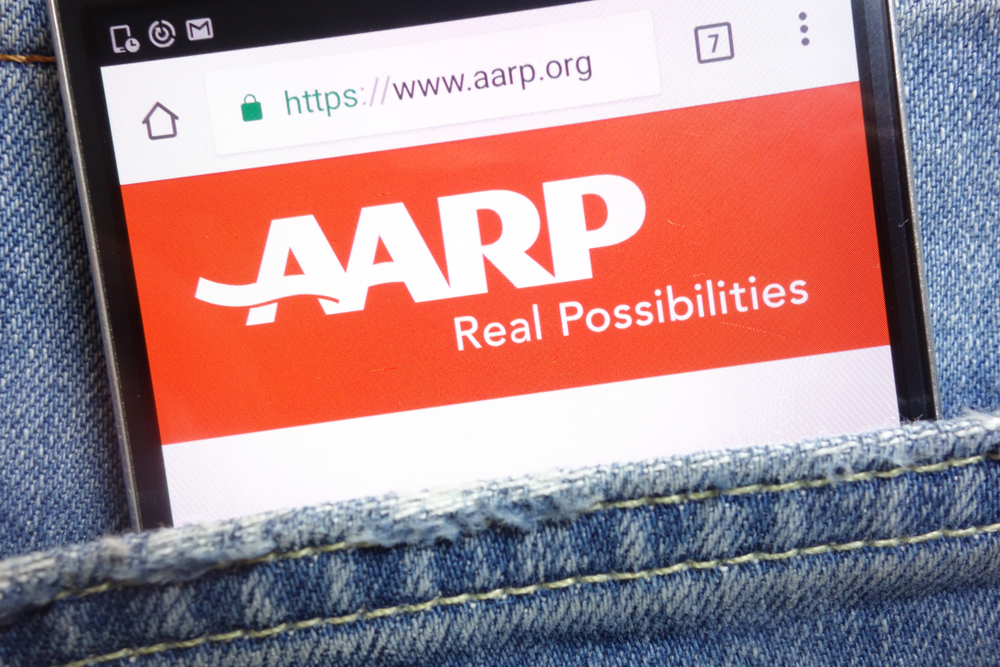For many American homeowners, their house is their biggest financial asset. Over the past few years, rising property values and steady mortgage payments may have helped you build a significant cushion of equity. With the right strategy, a home equity loan or line of credit (HELOC) can become a tool for increasing your net worth. Understanding how to use home equity to build wealth is key to making wise investment decisions.
Read more: The best home equity loan lenders
Home equity is the portion of your home that you own outright. You can easily calculate it by taking your home’s current market value and subtracting your outstanding mortgage balance.
For example, say your home is currently worth $400,000, and you owe $250,000 on your mortgage. Here, you have $150,000 in equity.
You can build home equity in two ways: Pay down your mortgage to decrease the amount you owe, or allow your property to appreciate. When both happen at once, your equity grows even faster.
It’s important to remember that equity isn’t the same as liquid cash. Accessing home equity usually involves taking on new debt. Before doing so, you’ll need to weigh the risks and benefits to decide if borrowing against your home’s value is the best financial move.
Learn more: How much is your house worth? How to determine your home value.
There are two types of second mortgages that help you borrow against your home equity. With a second mortgage, you don’t have to replace your original home loan as you would with refinancing. You’ll make two payments each month: one to your existing mortgage and one to the second mortgage.
A home equity loan, or HEL, is a lump sum you borrow against your equity, typically at a fixed interest rate with set monthly payments. It works a lot like your primary mortgage: predictable payments that make budgeting easier and protect you from interest rate changes.
Because you receive all of the funds at once, borrowers generally use home equity loans for larger one-time expenses like a major home renovation, a child’s educational expense, or a down payment on another property.
A home equity line of credit, or HELOC, works more like a credit card. You’re approved for a maximum borrowing limit, but you can draw on it as needed and only pay interest on what you use. Instead of a loan, it’s a revolving line of credit.
This flexibility makes HELOCs useful for ongoing projects or investments that might not require you to have all the funds at once. For example, a HELOC could be useful for paying contractors in stages during a home renovation or funding a business expansion over time.
Learn more: The best HELOC lenders right now
You could use funds from your second mortgage to invest in another property. This could mean buying a second home to rent out, a vacation home you occasionally lease, or a fixer-upper to renovate and sell.
Real-world example: Say you’re a homeowner with $200,000 in equity who takes out a $75,000 home equity loan to use as a down payment on a $300,000 rental home. You rent it out for $2,200 a month, covering the rental’s mortgage and generating a modest profit after expenses. Over time, you build equity in both properties while enjoying a steady stream of rental income.
The math can work — but only if you have the cash flow and reserves to handle vacancies, maintenance, and unexpected costs. Without a financial cushion, even one bad tenant or costly repair could turn your investment from profitable to painful.
Strategic home renovations can enhance your home’s resale value and make it a more enjoyable place to live every day. Kitchens, bathrooms, and energy-efficient upgrades often provide the best return on investment.
For instance, a $30,000 kitchen remodel that boosts your home’s value by $20,000 isn’t an immediate profit, but it could pay off when you sell — especially in competitive housing markets. Energy-efficiency improvements, such as installing solar panels or upgrading insulation, can also lower utility bills and make your home more appealing to future buyers.
3. Start or expand a business
Some entrepreneurs use a home equity loan to fund a business launch or expansion. This can be a lower-cost financing option compared to unsecured business loans, especially if your credit is strong.
Still, it’s a high-stakes move. Your home is collateral, so be sure your business plan and market research are rock solid. Have a detailed projection of expenses and revenue, and consider starting smaller to test your concept before committing large sums.
If you’re carrying credit card balances or personal loans at double-digit interest rates, using home equity lending to pay off your other debts could free up cash flow and save you money on interest.
This can be especially effective if you commit to directing your savings toward investments or retirement contributions.
However, debt consolidation only works if you address the habits or circumstances that led to the debt in the first place — otherwise, you risk ending up with both credit card debt and a larger mortgage. Also, you should be comfortable with the risk of using secured debt (a HEL or HELOC) to pay off unsecured debt (a credit card or personal loan). The risks of defaulting on a secured loan are much higher because you could lose your home to foreclosure if you can’t afford the monthly payments.
HELOCs often have variable interest rates, which can rise over time if rates increase. Even home equity loans, which have fixed rates, may cost more if market rates climb before you lock yours in. Higher rates mean higher monthly payments — and a tighter budget.
Property values can fluctuate in either direction. If home prices in your area drop, your equity could shrink, potentially leaving you owing more than your home is worth. This is referred to as being underwater on your mortgage.
This risk is even greater if you’ve used your equity to buy another property that also loses value.
When you borrow against your home, you’re using your primary residence as collateral. If your financial situation doesn’t go as planned, you could jeopardize your ability to keep your home.
This is especially true when using HELOC or HEL funds to purchase an investment property.
“Strategic use of debt can be beneficial — especially if you have the cash flow and reserves to support it. But I’d caution against treating home equity like a bottomless ATM,” said Adrianna Adams, a certified financial planner and head of financial planning at Domain Money, via an email interview. “If something goes wrong with the investment property — rental income dries up, maintenance costs spike, or property values drop — you’ve now put your primary residence at risk.”
Adams compared the risk to “leasing an extra car to become an Uber driver.” Sure, the numbers might work in the right conditions, “…but only if demand stays high, you have time to do the driving, and nothing goes wrong,” said Adams. “If you hit a slow season, get busy with other life events, or the car breaks down, you’re still on the hook for the payments without enough income to cover your costs.”
Adams said she encourages clients to make sure their “foundation,” an emergency fund and retirement savings, is solid before tapping home equity for investments.
“Financial planning is like building a house. You need a solid foundation — your emergency fund and retirement savings — before you start adding extra rooms,” said Adams. She calls these “bookend goals:” short-term liquidity and long-term retirement security.
If you don’t have a solid foundation in place, she warned, tapping equity can “…weaken the entire structure — giving up your own peace of mind.”
Borrowing too much against your home can leave you financially stretched, especially if your income changes or your investment underperforms.
Adams recommended having a separate emergency fund for any rental property you buy. “Just like your personal emergency fund — typically three to six months of living expenses — you should have three to six months’ worth of the rental property’s expenses saved as a buffer,” said Adams.
She also suggested asking yourself tough questions, such as whether you’d be willing to sacrifice lifestyle expenses, like annual vacations, to cover payments if rental income falls short.
Dig deeper: Is a HELOC a good idea? Here are the pros and cons.
Tapping into your home equity isn’t the only way to fund investments or major financial moves. Depending on your goals, other financing options could accelerate your path to wealth — or slow it down.
A cash-out refinance is another way to tap your home equity. It can free up funds while potentially lowering your mortgage rate and payment. This could lead to more breathing room in your budget to fund investments elsewhere.
However, extending your mortgage term — a typical outcome of cash-out refinancing — could mean it takes longer to own your home outright and delay the financial stability that comes with a mortgage-free life.
And if you already have a super-low mortgage rate, replacing your existing home loan with a new one means you lose that rate. However, with a home equity loan or HELOC, you can keep that low rate on your first mortgage.
When you take out a personal loan, it’s generally an unsecured loan. This means it is not secured by collateral like a HEL or HELOC, each of which uses your home as collateral. Thus, with a personal loan, your home stays safe if something goes wrong and you can’t keep up with monthly payments.
This protection can help preserve the wealth you’ve built in your home, but higher interest rates on personal loans could mean you pay more over the life of your loan than you would with a HEL or HELOC.
Dig in: How to choose between a HELOC and a personal loan
Wielding funds from a retirement account — like using your IRA to buy a house — before age 59 ½ can give you immediate access to cash, but at a steep cost.
Early withdrawals may trigger taxes and penalties. You will also lose years of compounding growth that could have significantly increased your nest egg. If your new investment doesn’t outperform the long-term return you would have earned through your IRA, your overall wealth could take a hit.
Loans designed for specific goals, such as SBA lines of credit for business owners or investment property mortgages for landlords, can align payment schedules and costs with projected business revenue or rental income. This structure can protect your cash flow and make it easier to reinvest profits back into your business ventures.
On the downside, qualification requirements can be stricter compared to HELs and HELOCs — especially for new business owners and landlords without a proven track record of success.
Home equity builds wealth by increasing the portion of your home you own outright. As you pay down your mortgage and your property value rises, your equity grows — essentially turning your home into a store of value. Over time, this asset can boost your net worth and serve as a financial resource. You can borrow against it for investments, renovations, or debt consolidation, or simply hold on to it and benefit when you eventually sell your home.
Wealthy homeowners often treat home equity as a low-cost source of capital for other investments. For example, they might use a home equity loan or a HELOC to fund income-producing assets, such as rental properties, business ventures, or stock market opportunities. By borrowing at a relatively low interest rate and aiming for higher returns elsewhere, they can amplify their overall gains. The key is strategic use, ensuring the borrowed funds generate more value than the cost of accessing them.
Yes, but it requires a well-planned approach. You can tap your home equity through home equity loans or lines of credit to invest in rental property, pay for value-boosting renovations, or start a business. In each case, the idea is to generate returns that exceed your borrowing costs. However, using home equity always carries risk. If the investment doesn’t pay off, you could be left with extra debt and fewer options, and risk losing your home. That’s why it’s essential to run the numbers and have a clear repayment strategy before you borrow.
Laura Grace Tarpley edited this article.























